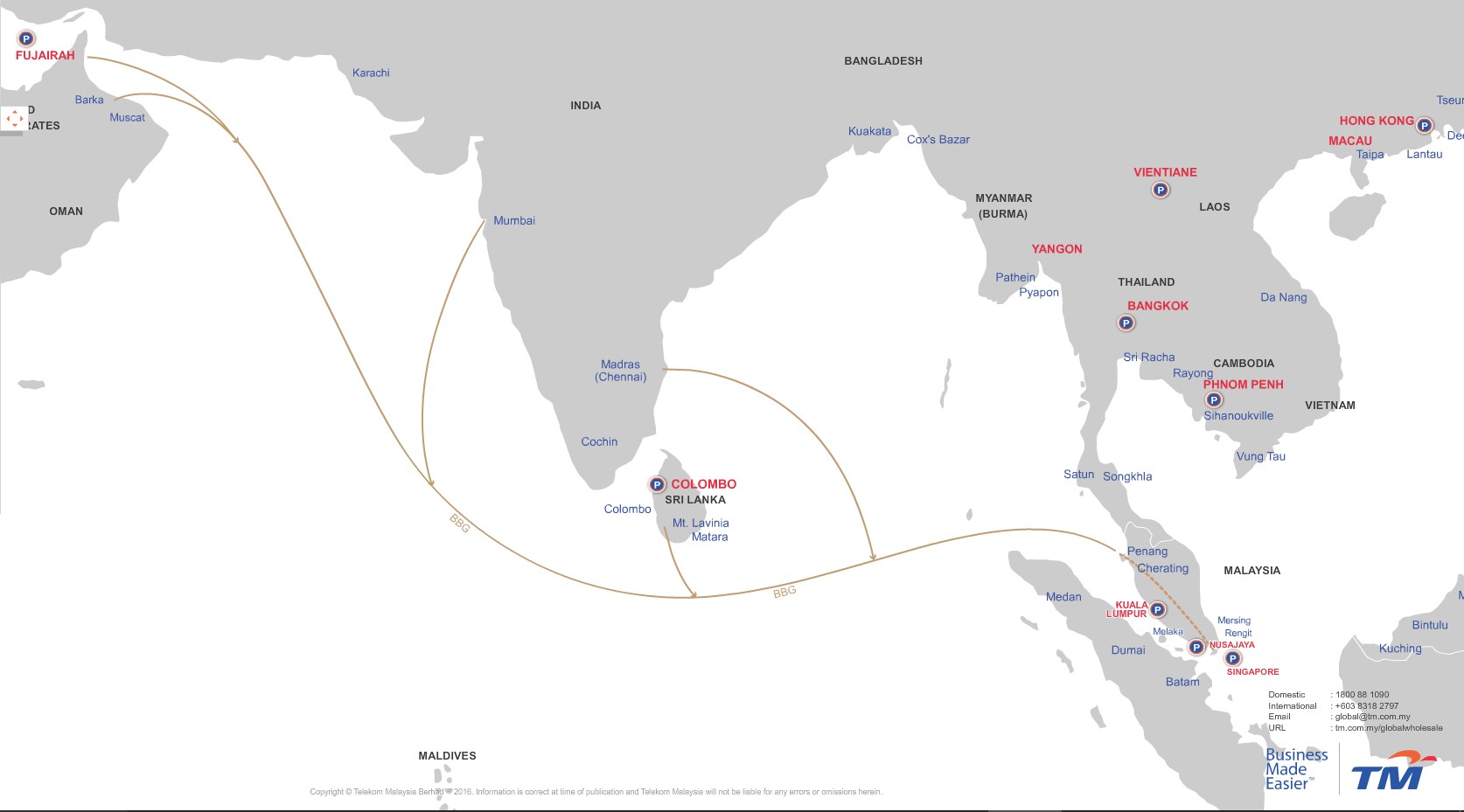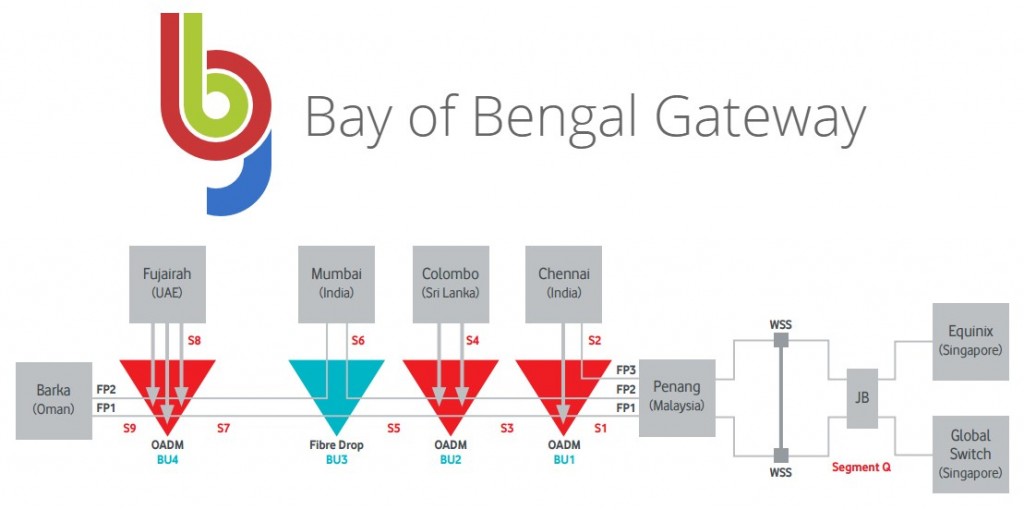Telekom Malaysia (TM) today has announced that the Bay of Bengal Gateway (BBG) submarine cable system which is co-owned by the company through a multi-national consortium is now operational. In fact, the cable system which begun its deployment in 2013 already started carrying commercial traffic since 30 March 2016.
Apart from TM, the BBG consortium also includes Sri Lanka’s Dialog Axiata, UAE’s Etisalat, Oman’s Omantel, India’s Reliance Jio Infocomm, and UK’s Vodafone. Spawning over a distance of 8,000km, the 100Gbps cable system landing points are located in Fujairah (UAE), Barka (Oman), Mumbai (India), Chennai (India), Mt. Lavinia (Sri Lanka), and Penang (Malaysia).
Furthermore, BBG also includes a protected terrestrial route between Penang and two point-of-presence in Singapore. This provides additional reliability to the cable system by avoiding the Strait of Malacca which is not only congested but also prone to cable cuts.
While the main role of BBG is to provide seamless high-speed connection between South East Asia, Central Asia, and Middle East, it also interconnects with Europe, Africa, Far East Asia, and North America through other nearby cable systems. As for TM itself, the cable system will apparently provide additional capacity for the company to manage traffic congestion as BBG will act as an alternative route to Europe for TM’s IP traffic.
(Source: TM, Vodafone, Bay of Bengal Gateway Consortium)
Follow us on Instagram, Facebook, Twitter or Telegram for more updates and breaking news.




